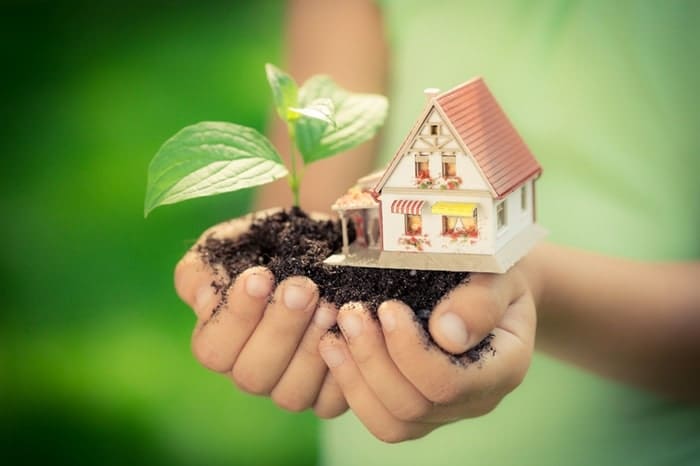Embracing eco-friendly changes at home is becoming a seamless part of modern living, mirroring the growing awareness of our environmental footprint. These alterations range from straightforward swaps like energy-efficient bulbs to innovative heating solutions, each playing a crucial role in reducing energy consumption and costs.
With sustainability now at the heart of home design and lifestyle, the journey towards a greener, more efficient home is not just an environmental statement, but a practical approach to modern living.
Energy-Efficient Lighting Solutions
The switch to energy-efficient lighting is one of the simplest yet most impactful eco-friendly changes you can make in your home. Opting for LED bulbs over traditional incandescent ones is a smart choice, both environmentally and financially. LEDs consume significantly less energy and have a longer lifespan, meaning fewer replacements and less waste.
This shift not only helps in reducing your carbon footprint but also cuts down on electricity bills. By embracing these advanced lighting options, homeowners can enjoy a well-lit space while contributing to a more sustainable future, demonstrating that even small changes can make a big difference.
Sustainable Insulation Options
Proper insulation is key to an eco-friendly home, playing a vital role in reducing energy usage and maintaining a comfortable indoor environment. Traditional insulation materials are being increasingly replaced by sustainable alternatives, such as sheep’s wool, recycled denim, and plant-based products.
These eco-friendly insulators not only offer excellent thermal performance but also improve indoor air quality and are less harmful to the environment during production and disposal. By choosing sustainable insulation, homeowners can significantly decrease their heating and cooling costs, making their homes more energy-efficient while supporting environmentally responsible practices.
Heating Options for an Eco-Friendly Home
Underfloor heating, with its effective heat distribution, emerges as a wise choice, especially when considering the cost of underfloor heating in the long run. Its energy efficiency leads to reduced heating bills, making it a cost-effective option for eco-conscious homeowners.
Other sustainable heating methods, such as solar heating and heat pumps, also play a crucial role in eco-friendly home heating. Solar heating utilises the sun’s renewable energy, while heat pumps are efficient in transferring heat from the air or ground into your home. These options collectively offer a greener approach to heating homes efficiently.
Water Conservation Techniques
Conserving water is a crucial aspect of creating an eco-friendly home. Simple yet effective measures can significantly reduce water usage, such as installing low-flow showerheads, faucets, and toilets. These fixtures use less water while maintaining functionality, making them an ideal choice for environmentally conscious households.
Another approach is the implementation of greywater systems, which recycle water from showers and sinks for use in gardens or toilets. Adopting these water-saving techniques not only helps preserve this vital resource but also reduces water bills, making them beneficial for both the environment and homeowners alike.
Using Eco-Friendly Materials for Home Renovations
Incorporating eco-friendly materials into home renovations is a key step towards sustainability. These materials, such as recycled glass for countertops or bamboo for flooring, not only reduce environmental impact but also add a unique aesthetic to the home. Opting for reclaimed wood or recycled metal tiles can also significantly lower the carbon footprint associated with manufacturing new materials.
By choosing environmentally responsible products, homeowners can ensure their renovation projects are not only stylish but also aligned with green living principles. This approach supports global sustainability efforts and fosters a healthier living environment.
Breathing Easy: Enhancing Your Home’s Air Quality
Improving indoor air quality is essential for a healthier home environment. Utilising indoor plants as natural air purifiers can significantly improve air quality by removing pollutants and releasing oxygen. Ensuring proper ventilation is also key in reducing moisture and controlling mould growth, contributing to fresher air.
Regular cleaning and vacuuming help to keep dust and allergens at bay, and opting for natural, chemical-free cleaning products prevents the release of harmful toxins into your home. These steps collectively contribute to a healthier, more eco-friendly living space, making the air we breathe indoors cleaner and safer.
Eco-Friendly Gardening
Eco-friendly gardening is a rewarding way to contribute to environmental sustainability. It involves practices like composting kitchen scraps and garden waste, which enriches the soil naturally and reduces landfill waste. Using native plants is beneficial as they are adapted to the local climate and require less water and care which can be a great low-maintenance gardening idea.

Natural pest control methods, such as encouraging beneficial insects or using homemade, non-toxic pesticides, protect the garden without harming the ecosystem. Rainwater harvesting for irrigation further conserves water resources. By adopting these practices, gardeners can create a thriving outdoor space that supports biodiversity and the environment.



























